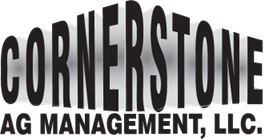Ensuring your cows have access to clean water is a simple yet effective way to boost their health, feed intake, and milk production, according to veterinarian David Reid.
Reid, a dairy consultant from Hazel Green, Wisconsin, emphasized the importance of water quality in a recent episode of The Dairy Podcast Show. His experience as a milk quality and udder health consultant taught him that providing ample, clean water can significantly enhance cow health and productivity.
Key insights from Reid’s discussion include:
- Cleanliness is Crucial Simply providing water is not enough. Regular cleaning of water troughs is essential. Reid suggests using sanitizing systems with chlorine dioxide or peroxide to maintain high water quality.
- Hydration for Lactation Cows need plenty of water for milk production, which is 87% water. Fresh water should be available immediately after milking to quench the cows’ thirst triggered by the hormone prolactin.
- Temperature Matters Cows prefer warm water, especially in cold weather. Utilizing discharge water from milk cooling systems can provide a warm and appealing water source.
- Critical Transition Periods Clean water is vital during the pre- and post-calving periods. Proper hydration supports better appetites and overall health during these critical times.
- Facility Planning Water availability should be a primary consideration in facility design. Reid recommends providing 4-5 linear inches of drinking space per cow and ensuring adequate supply capacity to meet demand.
Reid also advocates for the use of water meters in dairy management to track water intake and correlate it with cleaning schedules and feed intake, which can help optimize cow health and milk production.
A client of Reid’s who meticulously cleaned water bowls daily reported gaining an extra 3 pounds of milk per cow per day simply by maintaining high water quality.
By prioritizing clean water access, dairy farmers can promote healthier cows and improve their overall productivity.
This summary is based on the article “Healthy Rumens Start with Water” by Maureen Hanson, published on May 16, 2024, on Dairy Herd Management.
For more tips on optimizing your dairy farm operations, contact us at Cornerstone Ag Management. We’re here to provide unbiased support to help you achieve the best results for your farm.












